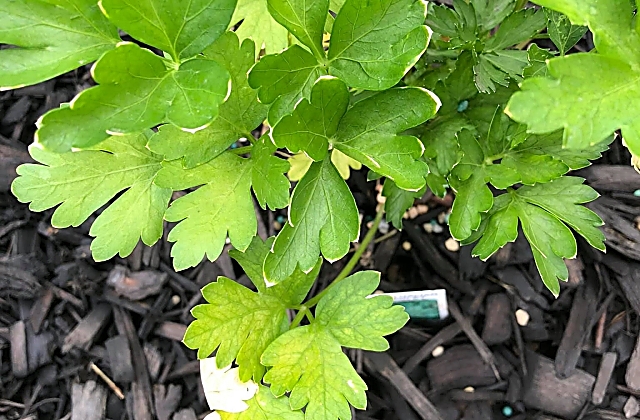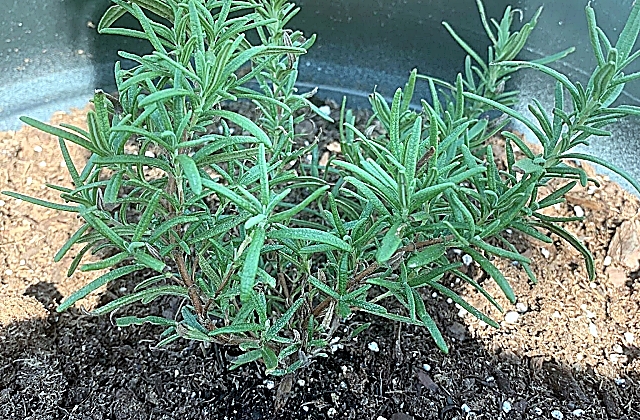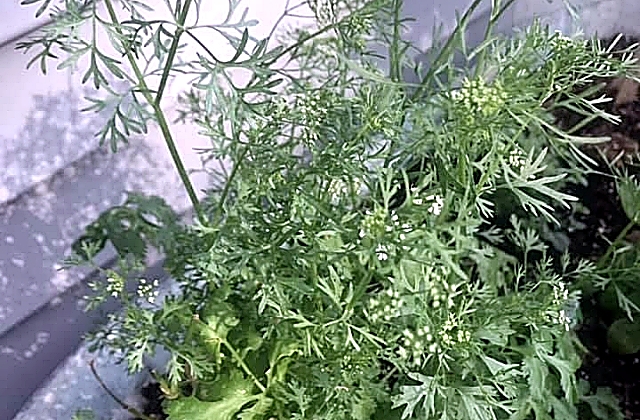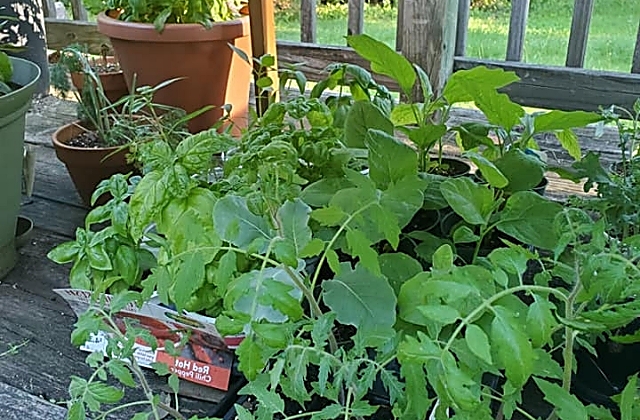Herb Gardening: Tips for Growing Flavorful Greens
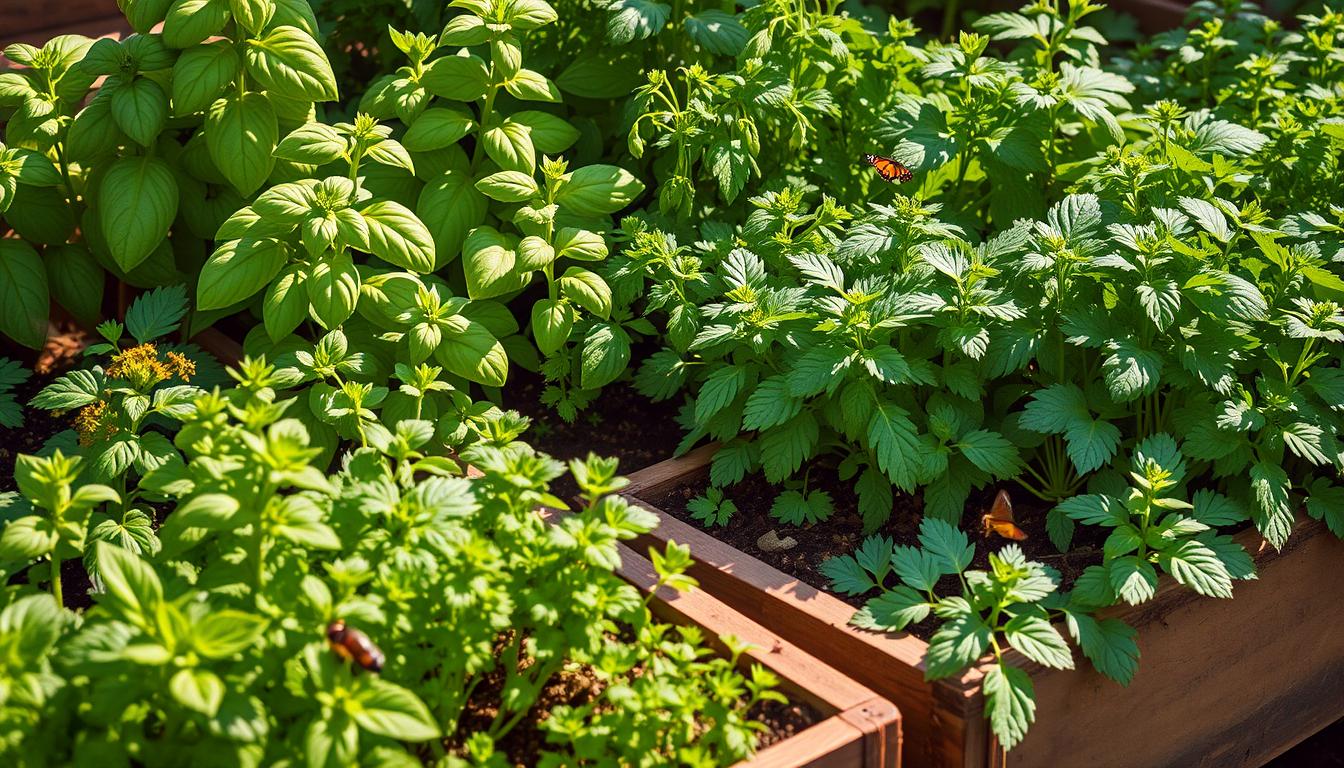
Growing your own herb garden is a rewarding hobby. It lets you enjoy the fresh taste and smell of herbs right from your garden. But, it’s not just about buying plants from a store. Many store-bought herbs come with synthetic fertilizers and fungicides, making them hard to keep healthy in your garden.
To make your herb garden thrive, look for other ways to get your plants. Consider starting with seeds or buying from a local nursery that grows plants organically. This can make a big difference in how well your herbs grow. By learning what each herb needs, you’ll be able to grow a garden full of tasty herbs for your kitchen.
Key Takeaways
- Avoid purchasing herb plants from big box stores, as they may have been treated with synthetic chemicals
- Explore starting herbs from seed or sourcing them from local nurseries that use organic growing methods
- Understanding the specific needs and growth habits of various herb varieties is crucial for a successful herb garden
- Prioritize fresh, flavorful herbs grown using sustainable practices for your culinary creations
- Investing in a thriving herb garden can provide a bountiful and convenient supply of aromatic herbs for your kitchen
Sourcing the Best Herbs for Your Garden
Choosing the right seeds and plants is key to growing tasty herbs. Don’t buy herbs from big stores because they often come from places that focus on making lots of money, not on being organic or sustainable. Look for seeds and plants from local, reputable places that offer organic and non-GMO options.
Growing Herbs from Seeds vs. Nursery Plants
Some herbs like cilantro, parsley, dill, and basil grow well from seeds in your garden. Others, like lavender, rosemary, and thyme, do better as nursery plants. Think about your climate, growing season, and what you like when choosing between seeds or starter plants.
Recommended Seed Sources for Organic Herbs
- Baker Creek Heirloom Seeds
- Botanical Interests
- Southern Exposure Seed Exchange
- High Mowing Organic Seeds
These trusted seed companies have a big selection of organic, heirloom herb seeds. With a bit of care, you can grow a garden full of tasty herbs from these high-quality seeds.
“Heirloom and open-pollinated herb seeds ensure you’re getting the most authentic, flavorful varieties for your garden.”
Creating the Ideal Soil Mix for Herb Gardens
Creating a thriving herb garden starts with the right soil mix. Aim for a blend that drains well and is full of nutrients. This mix should mimic the sandy soil that herbs love.
The Importance of Well-Draining Soil
Herbs need soil that drains well to avoid root rot. Sandy soil is great for this because it lets water through but doesn’t hold it. It’s a perfect base for your herb garden.
Blending Topsoil, Compost, and Sand
For the best soil mix, use equal parts topsoil, compost, and sand. Topsoil gives herbs the nutrients they need. Compost and sand improve drainage and air in the soil.
Adding Earthworm Castings for Extra Nutrients
Earthworm castings add extra nutrients to your soil. They’re full of good bacteria and minerals that help herbs grow strong.
| Soil Type | Characteristics | Best Use for Herbs |
|---|---|---|
| Sand Soil | Finely divided rocks and small mineral particles, high sand content and low nutrients | Good drainage, but may require additional nutrients |
| Silt Soil | Better at holding water and nutrients, more fertile than sand soil | Suitable for herbs, but may require more drainage |
| Clay Soil | Holds water very well but can become waterlogged | Not ideal for herbs, requires significant soil amendments |
| Loamy Soil | Combination of sand, silt, and clay, provides good characteristics for growing plants | Excellent for herbs, with good drainage and nutrient retention |
Follow these tips to make a soil mix that drains well and is full of nutrients. This will help your herb garden thrive and give you lots of tasty herbs all season.
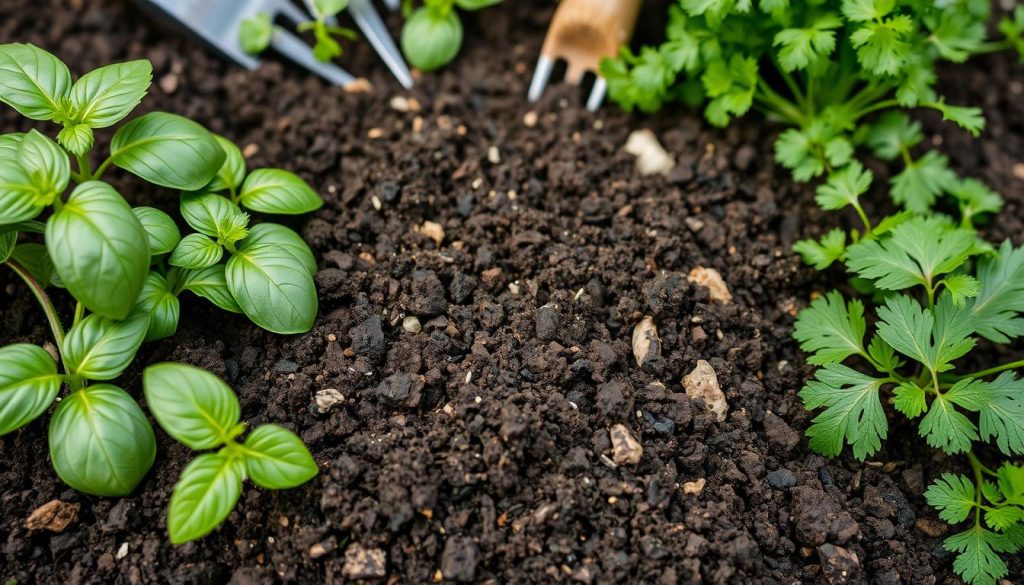
herb gardening: The Joy of Growing Fresh Herbs
Growing an herb garden is rewarding for both new and experienced gardeners. It brings fresh herbs that taste great and connects you with nature. Whether you want to improve your cooking or enjoy the beauty of greenery, herb gardening has lots to offer.
The Benefits of Growing Your Own Herbs
Growing herbs at home has many benefits. Fresh herbs taste better and smell stronger than store-bought ones. You know exactly where they came from and how they were grown. It’s also a way to relax and connect with nature.
Choosing the Right Herbs for Your Climate
When picking herbs for your garden, think about your local climate. Some herbs like basil love the heat, while others like chives prefer cooler weather. Picking the right herbs for your area means a better harvest and less worry about failure. The USDA Plant Hardiness Zone Map can guide you in choosing the best herbs.
Anyone can enjoy growing fresh herbs. With some planning and the right herbs for your climate, you can improve your cooking and wellness. Herb gardening is a rewarding hobby for all.
Ensuring Proper Sunlight and Water for Herbs
Herbs add flavor and beauty to our gardens and kitchens. They need the right amount of sunlight and water to grow well. It’s important to know what they need for a healthy garden.
Most herbs love full sun, needing at least 6 hours of direct sunlight each day. Herbs grown indoors under fluorescent lights should get 12-16 hours of artificial light daily to feel the sun’s warmth. This sunlight makes their leaves grow well and boosts the oils that give them flavor.
Watering herbs is also crucial. While they can survive with little water, those in pots need water often, especially when it’s hot and dry. Those in the ground might only need water when it’s very dry. Mulching around herb plants helps keep the soil moist and protects them in winter.
- Herbs prefer well-drained soil with a pH between 6.0-7.5 for best growth.
- Containers for herbs should have holes to prevent water from pooling.
- Herbs don’t need much fertilizer; too much nitrogen can reduce their flavor.
Knowing what sunlight and water your herbs need helps them grow strong and flavorful. With a bit of care, your herb garden will be full of taste and color.
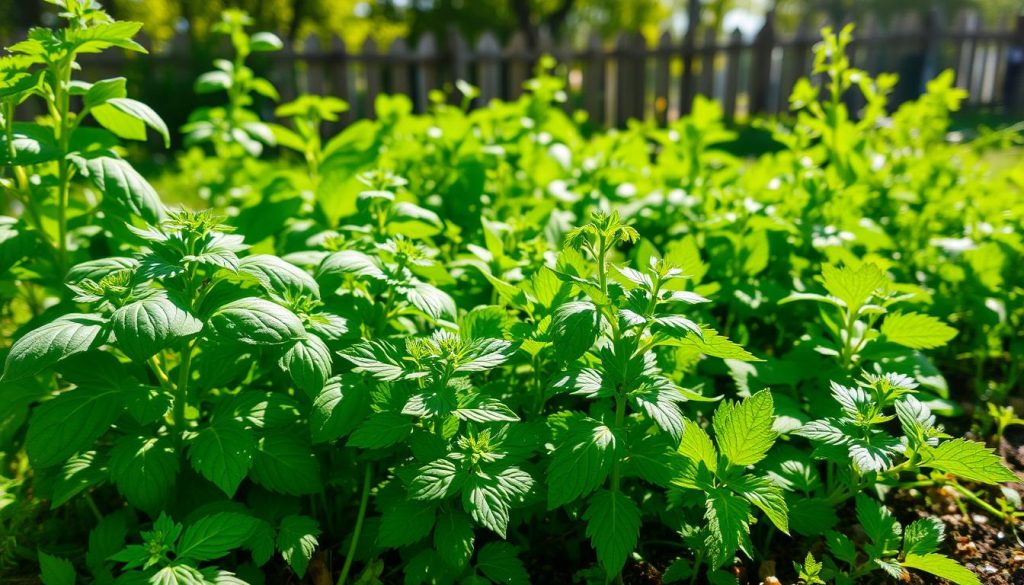
Understanding Herb Growth Patterns and Yields
Mastering herb gardening is more than just planting and watering. It’s key to know how different herbs grow and how much they produce. This knowledge lets you enjoy fresh, tasty herbs all season long. By using succession planting, you can keep your herb garden full of flavor.
Succession Planting for Continuous Harvests
Some herbs, like dill and cilantro, grow fast and flower quickly. Plant them every 6-8 weeks to keep your garden full. On the other hand, herbs like basil and parsley grow slower and you can plant more of them. They can take more harvesting without getting tired.
- Dill and cilantro should be planted every 6-8 weeks to prevent bolting and ensure a continuous harvest.
- Basil and parsley can be planted in larger quantities, as they can handle more frequent harvesting.
- Observe the herb growth cycles and plant yields of your favorite varieties to determine the optimal planting schedule.
Knowing how your herbs grow and using succession planting helps you get more from your garden. You’ll have a steady supply of fresh, tasty herbs all season.
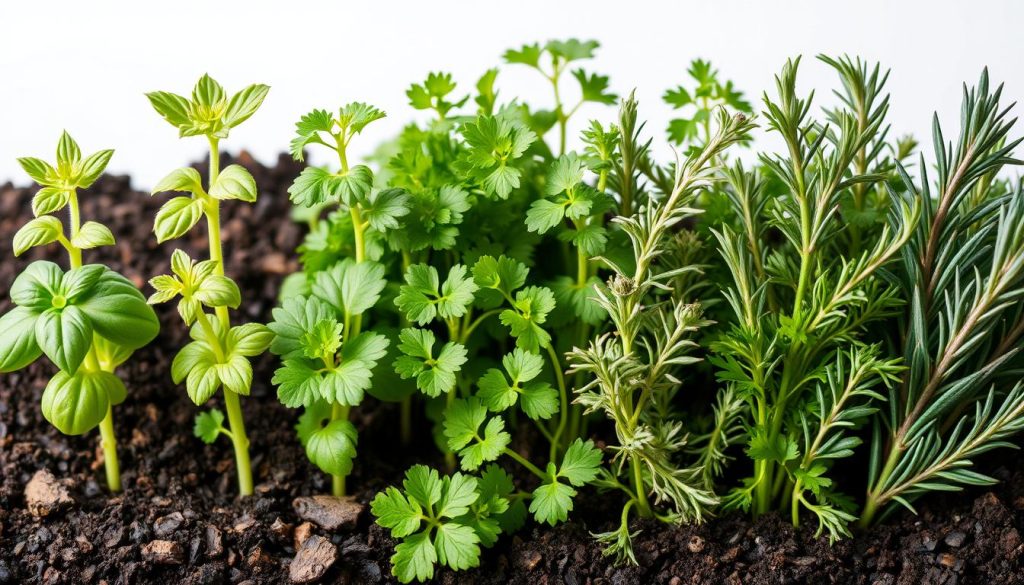
Overwintering Herbs for Year-Round Enjoyment
The warm months are perfect for growing herbs outdoors. But, the cold seasons can be tough for herb gardeners. You can keep enjoying fresh herbs all year with some planning and the right methods. Indoor hydroponic systems are a great way to keep your favorite herbs alive during winter.
Using Indoor Hydroponic Systems
Some herbs like rosemary and thyme can handle winter’s chill. But, herbs like basil and marjoram don’t like the cold. An indoor hydroponic system with LED grow lights lets you grow herbs all year, no matter the weather.
Hydroponics feed plants with nutrient-rich water, not soil. LED lights help plants make their own food through photosynthesis. This way, you can have a small herb garden inside during the cold months. You’ll always have fresh, tasty herbs for cooking and exploring new recipes.
| Herb | Overwintering Suitability | Recommended Growing Method |
|---|---|---|
| Rosemary | Tolerates winters in USDA hardiness zone 7 and possibly zone 6 with good protection | Outdoor perennial or indoor hydroponic system |
| Thyme | Hardy perennial herb that can withstand cold winters and is drought-tolerant | Outdoor perennial or indoor hydroponic system |
| Basil | Typically grown as an annual plant as it doesn’t survive frost or cold weather | Indoor hydroponic system |
Adding an indoor hydroponic setup to your gardening routine lets you enjoy fresh herbs all year. You can taste the summer in every dish, no matter the season.
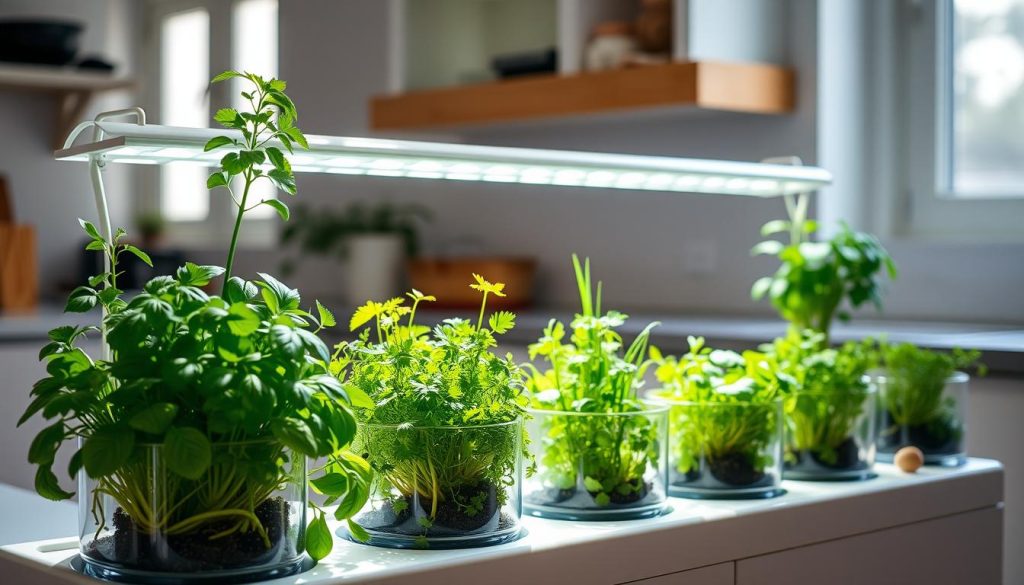
Sourcing Rare and Heirloom Herb Seeds
Finding the right seeds is key to a thriving herb garden. Big-box stores may not have much, but smaller seed companies offer a lot. They focus on heirloom and open-pollinated herbs, giving gardeners access to rare and unique flavors.
Kitazawa Seed Co., Baker Creek, and Truelove Seeds are great for finding herbs and heirloom herb seeds. These specialty herb sources offer more than what you find in regular stores. They give gardeners a chance to try unique culinary herbs that are special.
| Seed Company | Specialty | Variety Count |
|---|---|---|
| Kitazawa Seed Co. | Asian and Heirloom Herbs | Over 300 varieties |
| Baker Creek | Heirloom and Open-Pollinated Seeds | Over 2,000 varieties |
| Truelove Seeds | Rare and Unique Culinary Herbs | Over 150 varieties |
Choosing rare herbs and heirloom herb seeds from these companies opens up new flavors. It lets gardeners add special touches to their cooking. Discover rare and unique culinary herbs to make your herb garden stand out.
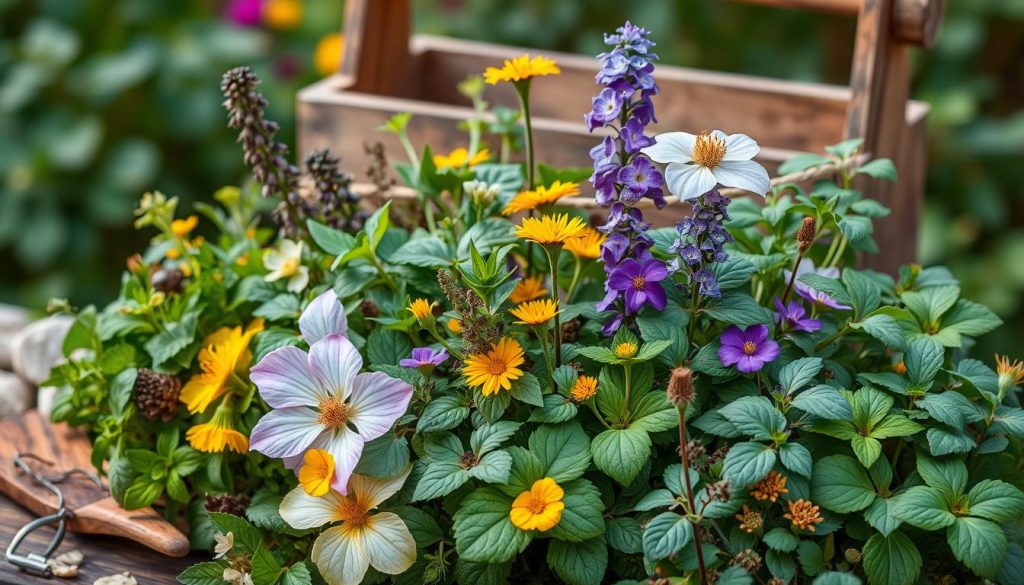
Preserving Herbs for Long-Term Storage
Harvesting and preserving fresh herbs is a rewarding part of gardening. You can use many methods to keep your herbs tasty and ready all year. Let’s look at freezing and drying herbs to keep their flavor for a long time.
Freezing Herbs for Later Use
Thick herbs like rosemary and sage can be frozen whole or chopped. Delicate herbs like basil work best as pesto. Wash and dry the herbs, then put them in airtight containers or freezer bags. This way, they can last up to 6 months, keeping their flavors and colors.
Drying Herbs Properly to Retain Flavor
Air-drying is a classic way to keep herbs fresh, but it needs careful attention. Remove the leaves from the stems and keep them away from direct sunlight. Dried herbs should be crispy and break easily. This drying takes 1-2 weeks, depending on your area’s humidity and temperature.
For faster drying, you can use a food dehydrator or a low-temperature oven. Dehydrators keep a steady temperature above 85°F and low humidity, keeping the herbs’ oils and colors. Oven-drying at 110-130°F for 3-4 hours is good for herbs like mint, sage, or bay leaf.
Choosing the right drying method is key to keeping herbs flavorful for a long time. Dried and stored properly, herbs can last up to a year in the fridge or freezer. This way, you can enjoy the taste of summer all year.
“Drying herbs properly is an art, but the rewards are worth it. Properly dried herbs can last for months, retaining their robust flavors and vibrant colors.”
Choosing the Right Gardening Tools
Looking after your herb garden needs the right tools for efficiency and fun. From planting to harvesting, having the right tools helps. Let’s look at some key tools for your herb garden.
Essential Gardening Tools for Herb Enthusiasts
- Hand Trowel: A reliable hand trowel is key for planting, moving plants, and weeding. Choose one with a stainless steel blade for durability.
- Garden Pruners: Pruners, also called secateurs, are crucial for trimming and shaping herbs. Go for bypass pruners for live plants and anvil pruners for deadwood.
- Garden Shears: Bigger than pruners, garden shears are great for cutting thick stems and branches. Ratcheting shears make it easier.
- Hori Hori Knife: This “soil knife” is versatile for cutting roots, slicing through soil, and removing weeds.
Quality gardening tools made for herb gardens can greatly improve your growing success. Remember, the right gardening tools, herb garden tools, and essential gardening equipment change your herb gardening experience.
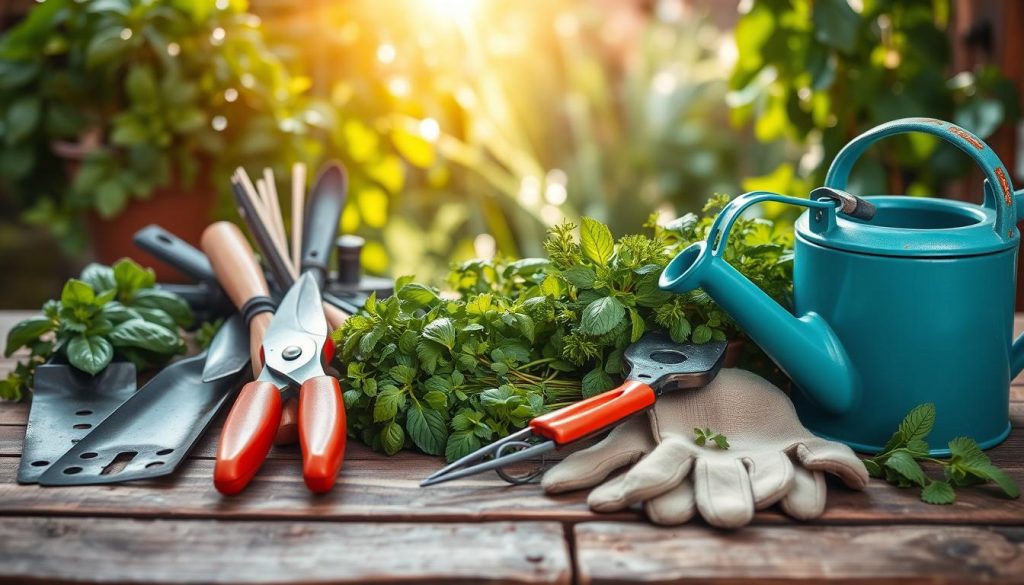
“Having the right tools on hand makes tending to my herb garden a breeze. I can’t imagine gardening without my trusty hand trowel, pruners, and hori hori knife.”
– Gardening Enthusiast, Jane Doe
Garden Maintenance Tools for Herb Gardens
Keeping a herb garden healthy takes more than just planting and picking. You need the right tools for garden maintenance. These tools help you keep your herbs healthy and your garden neat. They make a big difference between a good harvest and a neglected garden.
A small garden rake is very useful. It loosens and aerates the soil, letting air and water to the roots. A cultivator is also great for getting rid of weeds and keeping the soil light and well-drained.
For getting rid of weeds, a soil knife is essential. It cuts through tough weeds easily, keeping your herb garden neat. And, a garden hoe is perfect for mixing the soil and adding mulch to your herbs.
| Tool | Use | Recommended Product | Price |
|---|---|---|---|
| Garden Rake | Loosening and aerating soil | Grenebo Gardening Tools Set | $29.95 |
| Cultivator | Removing weeds and loosening soil | KIIZYS Indoor Garden Tools Set | N/A |
| Soil Knife | Precise weed removal | Fiskars Garden Herb Snip | $14.99 |
| Garden Hoe | Turning soil and applying mulch | Tudoccy Garden Tools Set | $39.99 |
With these key garden maintenance tools, you can keep your herb garden in top shape. Your weeding and mulching tasks will be easier. Choose quality tools to help your herbs grow well.
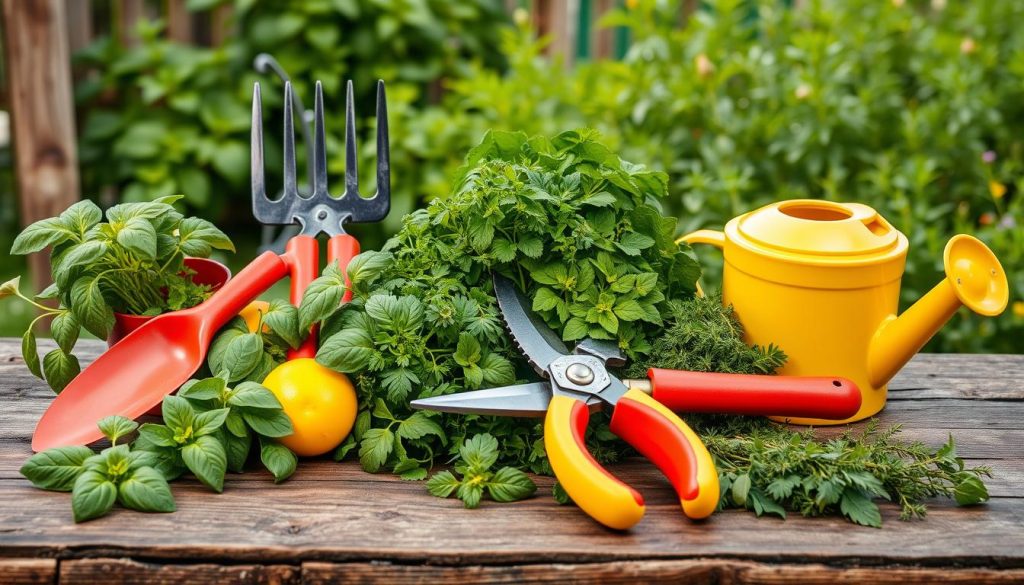
Landscaping Tools for Designing Herb Gardens
When planning your herb garden, you might need some landscaping tools. Tools like edgers, string trimmers, loppers, and pruners can help shape your herb beds. They make it easier to create neat borders and keep your garden looking great.
Herbs can grow in many places, like with vegetables, in flowerbeds, on patios, or in special herb garden design spots. Picking the right tools for edging and borders is key. They help define your herb garden’s areas and make it look intentional and polished.
- An edger creates crisp, clean edges around herb beds, keeping your garden tidy.
- A string trimmer is great for trimming along paths, borders, and hard-to-reach spots in your herb garden.
- Loppers are useful for shaping and pruning big herb plants, like woody rosemary or lavender, to keep them looking good.
Think about the growth habits and sun needs of different herbs when designing your garden. Taller plants add height, while low-growing ones are great for edging. Herbs like thyme, oregano, and rosemary are perfect for softening paved areas or lining paths.
| Landscaping Tool | Usage for Herb Garden Design |
|---|---|
| Edger | Create clean, defined edges around herb beds |
| String Trimmer | Trim along paths, borders, and hard-to-reach areas |
| Loppers | Shape and prune larger herb plants like rosemary and lavender |
Using the right landscaping tools in your herb garden design makes it look stunning and well-kept. It also ensures you get a lot of fresh, tasty herbs.
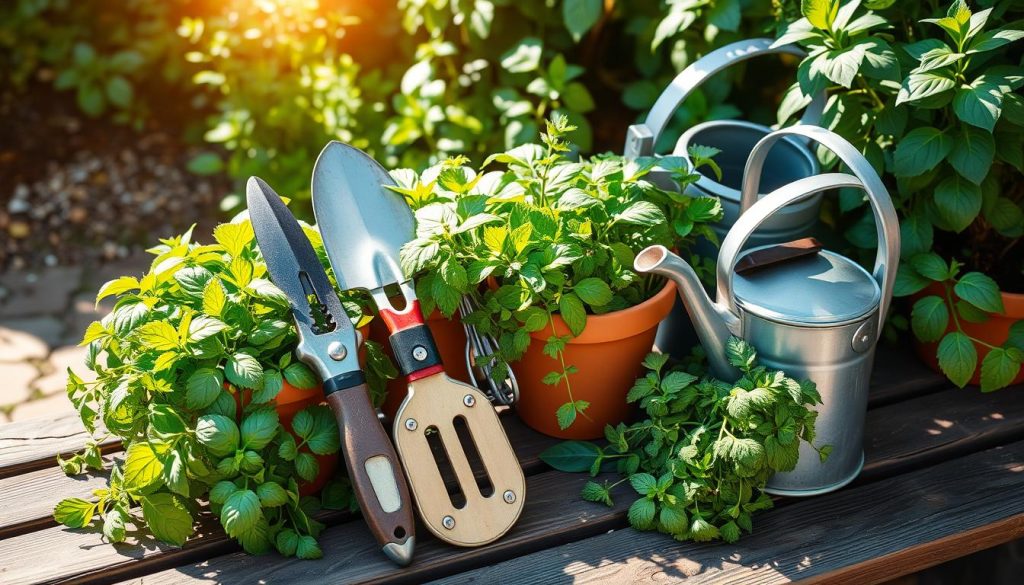
Yard Tools for Preparing Herb Garden Beds
Getting your soil ready for your herb garden can be tough, but the right tools help a lot. Tools like tillers and soil mixers are key for making a great spot for your herbs to grow.
Rototiller: The Powerhouse for Soil Preparation
A rototiller is essential for breaking up and mixing the soil well. It can quickly blend in compost or manure, giving your herbs the nutrients they need.
Garden Fork: The Versatile Soil Cultivator
For a hands-on method, a garden fork is perfect. It has long tines that loosen the soil, add air, and mix in organic stuff without harming roots.
Wheelbarrow: The Workhorse of Gardening
Moving soil or compost to your beds is easy with a strong wheelbarrow. Choose one with big, tough wheels and a strong frame for heavy loads.
With the right tools, preparing your herb garden beds is easy. This ensures your herbs grow well and produce a lot.
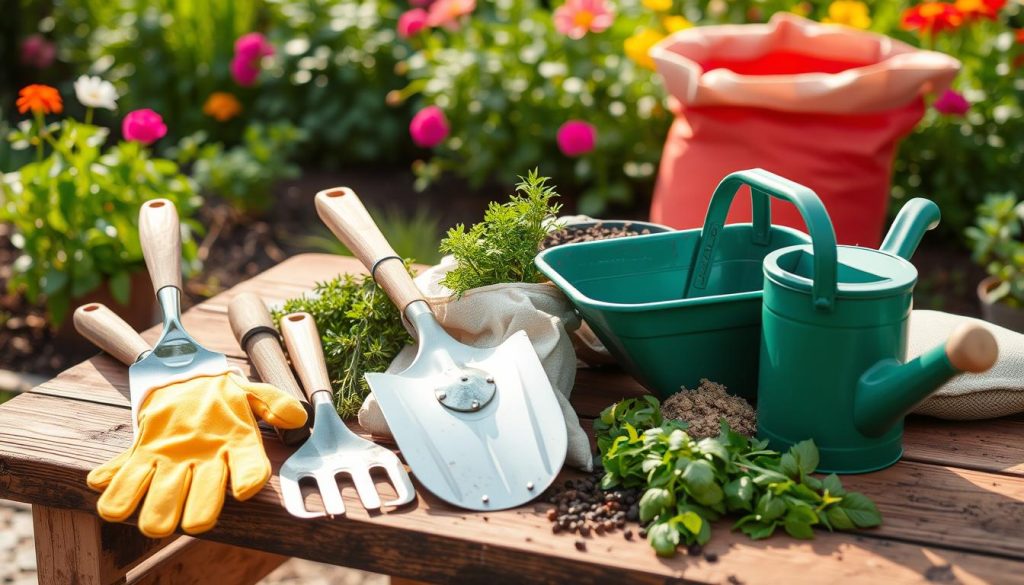
“The right tools can make all the difference in creating a thriving herb garden. Invest in quality yard tools, and you’ll reap the rewards of a bountiful harvest.”
Even though good tools cost more, they last a long time. For serious herb gardeners, they’re a smart buy.
| Tool | Purpose | Durability |
|---|---|---|
| Rototiller | Tilling and mixing soil | Up to 25 years with proper maintenance |
| Garden Fork | Loosening and aerating soil | 10-15 years with regular use |
| Wheelbarrow | Transporting materials | 25+ years for high-quality models |
Whether you’re starting a new herb garden or fixing up an old one, the right tools are key. They help make a space that’s perfect for your herbs to grow and taste great.
Gardening Accessories for Herb Enthusiasts
For those who love growing their own herb gardens, there are many accessories that can help. These items make taking care of your herbs easier, more fun, and rewarding.
High-quality pruning shears are a must-have. They let you trim and shape your herbs just right, keeping them looking great. Garden gloves protect your hands from scratches and irritation while you work.
Plant markers help you tell your herbs apart. They can be simple wooden stakes or fancy metal or ceramic tags. Kneeling pads also help, making gardening more comfortable by cushioning your joints.
- Pruning shears
- Garden gloves
- Plant markers
- Kneeling pads
If you have little outdoor space, consider vertical gardening tools. Tiered planters and ladder-style herb racks are great for growing herbs in small areas. They help you use your space well and make your herbs look great.
| Accessory | Description | Benefits |
|---|---|---|
| Tiered Planters | Multi-level planting containers for herbs | Saves space, creates vertical herb gardens |
| Herb Racks | Ladder-style structures for potted herbs | Maximizes limited outdoor areas, visually appealing |
Choosing the right gardening accessories can make growing herbs better. It helps your garden stay healthy, useful, and look good. With the right tools and setup, enjoying fresh, tasty herbs is a breeze.
Horticultural Tools for Healthy Herb Growth
To keep your herb garden health tools and tools for plant care and propagation in great shape, you need some special horticultural tools. These tools are key to helping your herbs grow well.
A soil moisture meter is a must-have. It lets you check how much water your herbs need. This prevents too much or too little water, which can harm your plants.
- For herbs that grow up or trail, use plant ties or trellises. They help your herbs grow tall and produce more.
- Tools like rooting hormone and seed starting trays make it easy to grow new herbs from cuttings or seeds. This way, you can increase your herb collection.
With the right horticultural tools, your favorite herbs will stay healthy, productive, and fun to grow every season.
| Tool | Price | Description |
|---|---|---|
| Novart XXL Herb Keeper | $35 (discounted from $40) | Preserves freshness of harvested herbs for up to 2 weeks |
| AeroGarden Harvest Elite | $117 | Hydroponic system for growing herbs indoors year-round |
| Luxiv Herb Leaf Stripping Tool | $6 (down from $10) | Quickly removes herb leaves from stems for easy drying or cooking |
| Jenaluca Herb Scissors Set | $13 (originally $15) | Specialized scissors for precise, clean cuts on delicate herbs |
| Felco Model 322 Snips | $24 | High-quality pruning shears for trimming and harvesting herbs |
With the right horticultural tools, your herbs will stay healthy, productive, and fun to grow every season.
“Proper tools make all the difference in the health and abundance of an herb garden.”
Conclusion
Growing a thriving herb garden takes careful planning, dedication, and the right tools. By choosing high-quality herbs and making the soil perfect, gardeners can enjoy fresh, tasty herbs all year. Whether your garden is big or small, the tips here can help you grow a garden full of herbs. These herbs can make your cooking better and offer natural health benefits.
Choosing the best seeds and arranging your garden well is key. You need to match your garden to your local climate and conditions. By knowing what each herb needs, you can make your garden a peaceful place that feeds your body and soul.
With the right knowledge and tools, growing herbs can be very rewarding. So, whether you’re experienced or new to gardening, try growing your own herbs. You’ll find it very fulfilling. Happy gardening!
